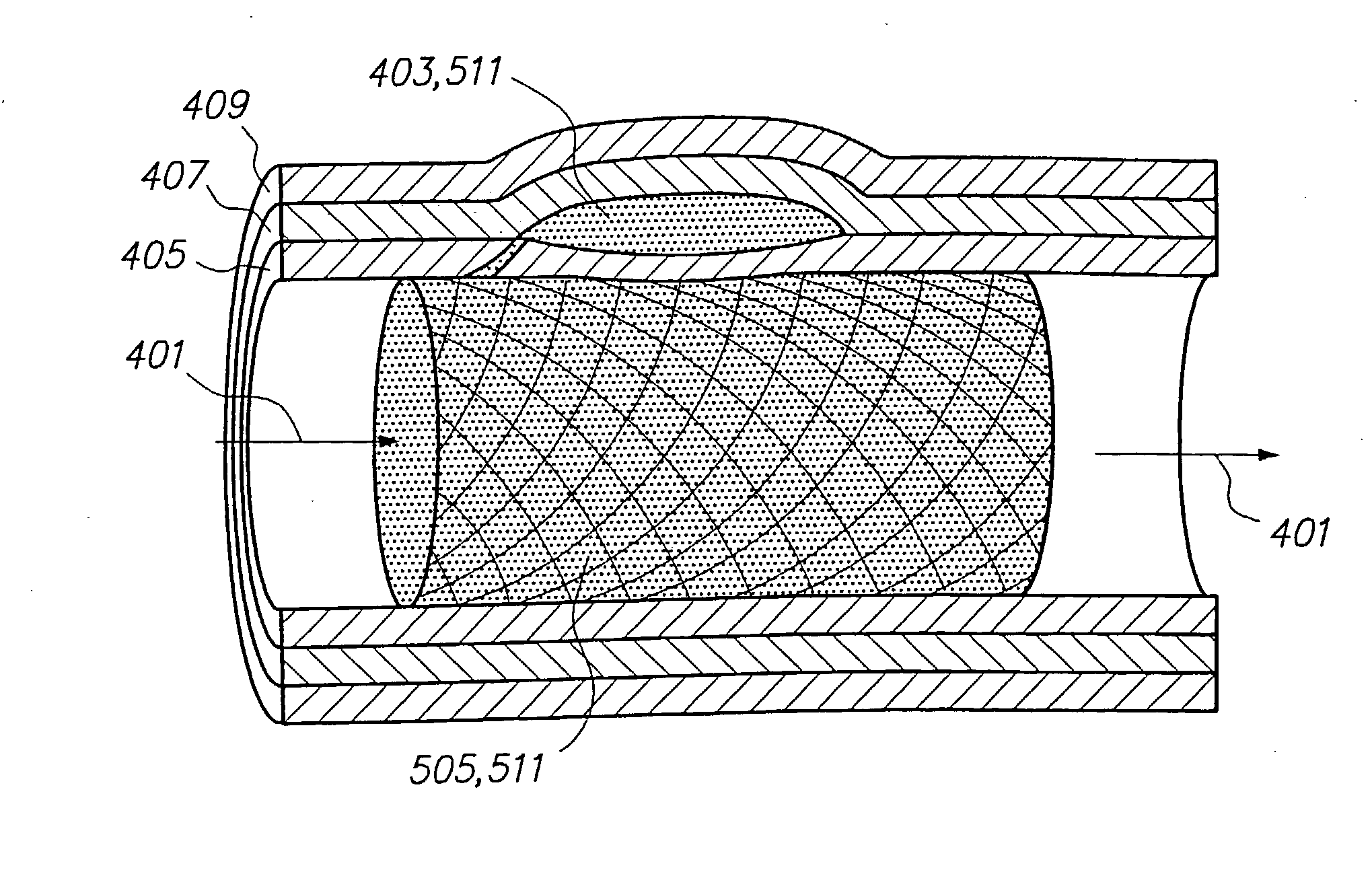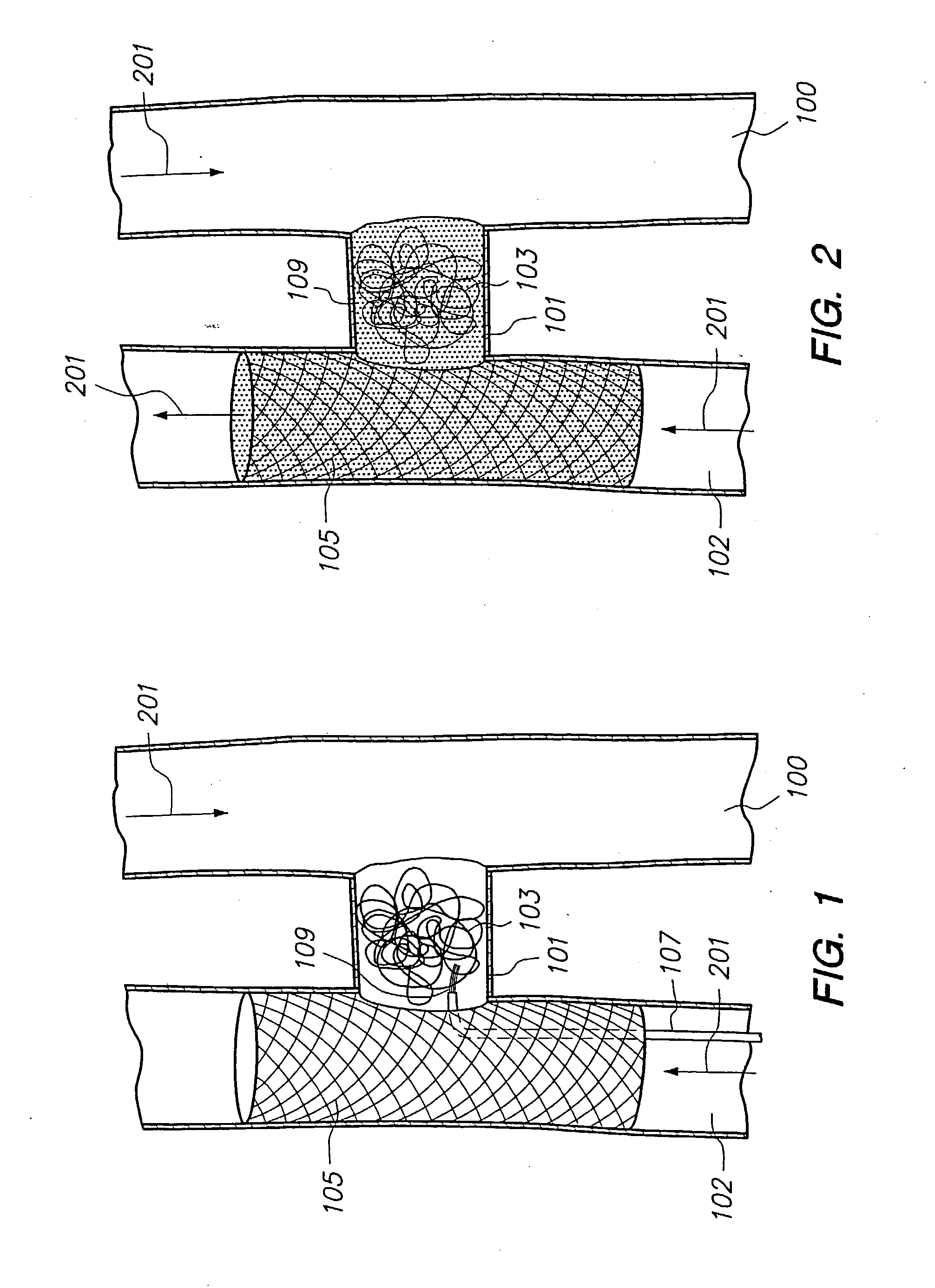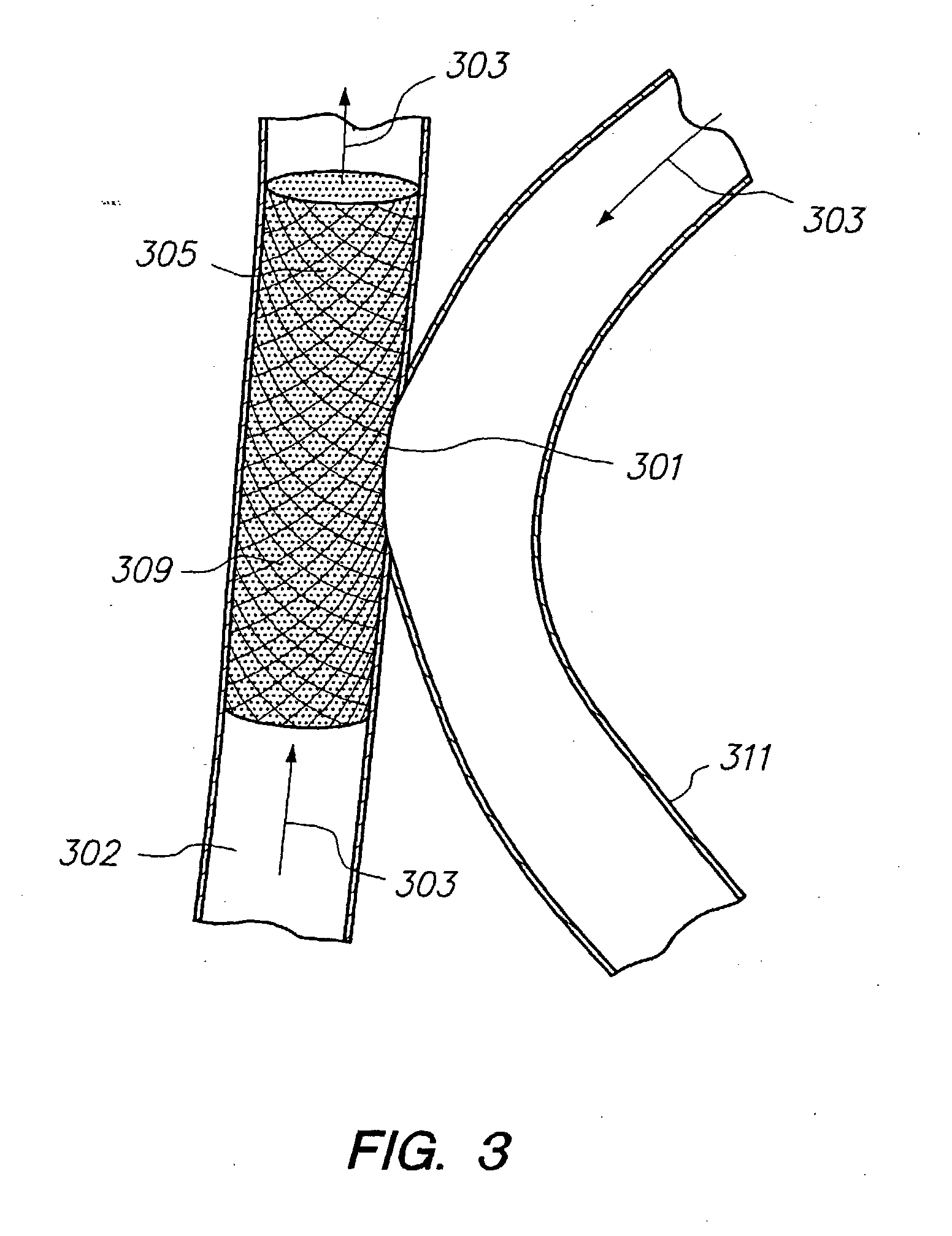Methods for vascular reconstruction of diseased arteries
a vascular reconstruction and diseased artery technology, applied in the field of diseased, nonaneurysmal arteries with vascular reconstruction, can solve the problems of arterial wall damage and injury, narrowing of the vessel and blood flow restriction, and difficulty in using this techniqu
- Summary
- Abstract
- Description
- Claims
- Application Information
AI Technical Summary
Problems solved by technology
Method used
Image
Examples
example 1
[0174] The purpose of this example is to demonstrate the preparation of a fluid polymer composition useful in the methods of this invention.
[0175] Specifically, an EVOH polymer composition was prepared as follows:
[0176] Composition
[0177] A) 8 g EVOH (48 mole % ethylene);
[0178] B) 30 g tantalum having an average particle size of about 3 .mu.m (narrow size distribution); and
[0179] C) 100 mL DMSO (anhydrous).
[0180] Component A) was added to Component C) at 50.degree. C. and stirred for 2 hrs on a hot plate under an argon blanket. To this resulting composition was added Component B) and the resulting mixture was mixed until homogeneous.
example 2
[0181] The purpose of this example is to demonstrate the preparation of a fluid polymer composition useful in the methods of this invention.
[0182] Specifically, an EVOH polymer composition was prepared as follows:
[0183] Composition
[0184] A) 16 g EVOH (48 mole % ethylene);
[0185] B) 30 g tantalum having an average particle size of about 3 um (narrow size distribution); and
[0186] C) 100 mL DMSO (anhydrous).
[0187] Component A) was added to Component C) at 50.degree. C. and stirred for 3 hrs on a hot plate under an argon blanket. To this resulting composition was added Component B) and the resulting mixture was mixed until homogeneous.
example 3
Vascular Reconstruction of an H-Shaped Fistula
[0188] The purpose of this example is to demonstrate procedures which can be used to treat diseased, non-aneurysmal arteries with vascular reconstruction. In this example, vascular reconstruction of an H-Shaped Fistula is demonstrated.
[0189] As shown in FIG. 1, an H-Shaped Fistula has been identified for vascular reconstruction. Prior to vascular reconstruction, the vein (100), the fistula cavity (101) and the adjoining diseased artery (102) participate in the systemic blood flow (201) of the patient. Microcatheter techniques are used to deliver a mesh stent (105) to the diseased artery at the site of the desired vascular reconstruction. Such techniques can include, but are not limited to, (1) delivering a self-expanding stent to the vascular site, (2) delivering a stent and balloon catheter to the site and inflating the balloon to expand the stent or (3) triggering stent expansion by sliding back a sheath to release the stent. The mesh ...
PUM
 Login to View More
Login to View More Abstract
Description
Claims
Application Information
 Login to View More
Login to View More - R&D
- Intellectual Property
- Life Sciences
- Materials
- Tech Scout
- Unparalleled Data Quality
- Higher Quality Content
- 60% Fewer Hallucinations
Browse by: Latest US Patents, China's latest patents, Technical Efficacy Thesaurus, Application Domain, Technology Topic, Popular Technical Reports.
© 2025 PatSnap. All rights reserved.Legal|Privacy policy|Modern Slavery Act Transparency Statement|Sitemap|About US| Contact US: help@patsnap.com



